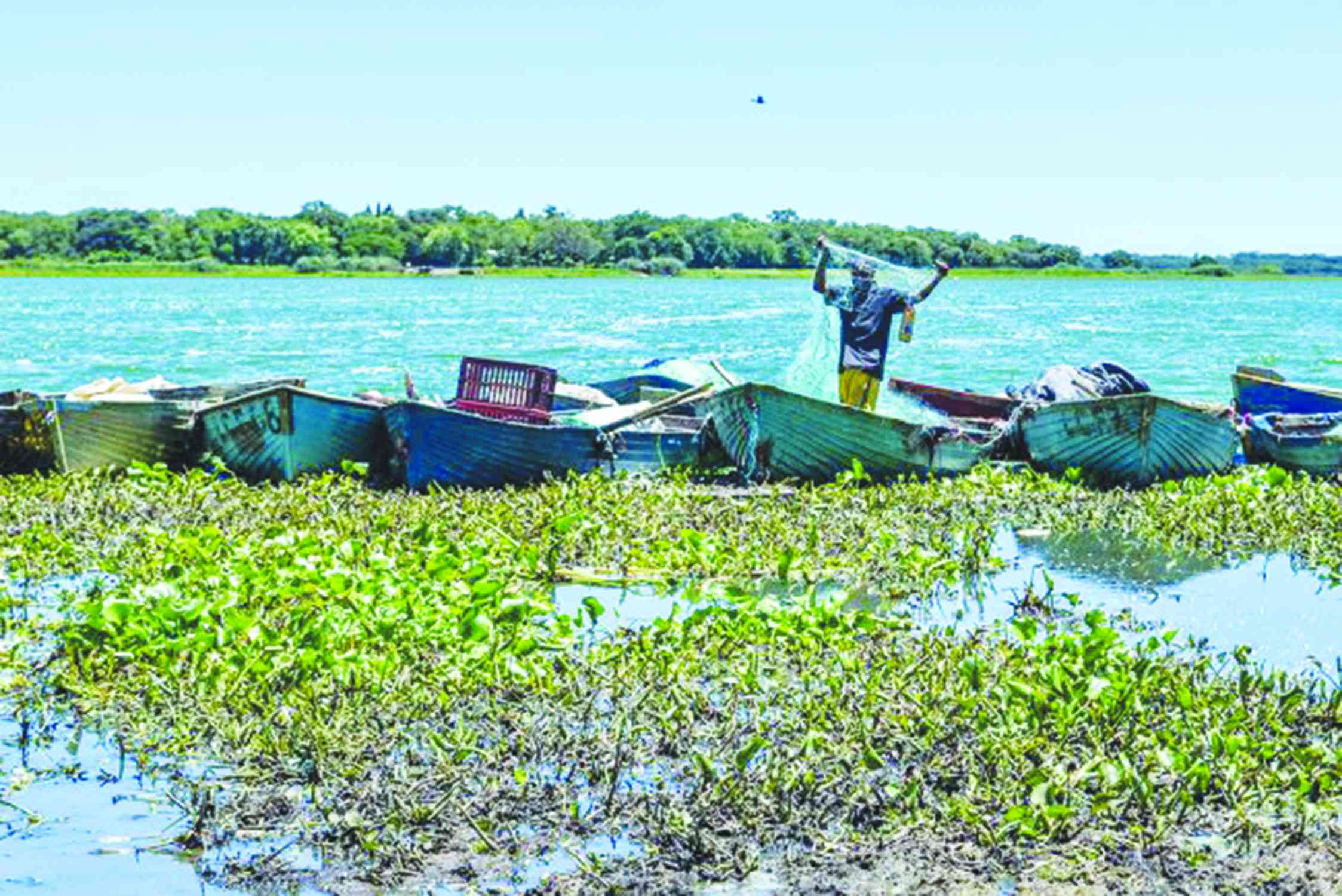
ILLICIT fishing activities at Lake Chivero continue unabated, with large quantities of fish from the lake flooding the market despite a ban imposed by the Zimbabwe Parks and Wildlife Management Authority (Zimparks), the Zimbabwe Independent can reveal.
Last year, Zimparks enacted the fishing ban following the death of an estimated
1 000 fish from cyanobacteria poisoning. The toxic outbreak was linked to raw sewage runoff from the Marimba area, which polluted the lake’s multiple bays, creating hazardous conditions for aquatic life.
To allay fears that contaminated fish might reach Harare residents, Zimparks closed the lake to the public while investigations were conducted.
However, the Independent found that fishing activities persist, raising concerns about public health and the effectiveness of the ban.
A visit to Norton’s bustling fish market showed vendors openly selling various fish species, including bream and catfish (muramba/umlamba), allegedly sourced from Lake Chivero.
Despite the lake’s status as a protected wetland of international importance and a critical water source for the nation, the contamination risk has not deterred some residents.
One local fisherwoman and vendor admitted to continuing her trade, expressing little concern over potential health risks.
- Bundu series captures poaching issue
- Conservationists help tackle poaching in Hwange
- Questions raised over elephant census
- Zim seeks Cites dialogue
Keep Reading
“Most of the fish in the market are from Lake Chivero. l know them personally. They have their own distinct features and are big,” she said.
“I do not think people will stop buying, selling or eating the fish despite fears that they may be contaminated.
“We will continue to eat the fish; we have already done so and we are still alive. People wake up early in the morning before Zimparks arrive, and fish.
“However, some fishermen and fisherwomen get them from Darwendale, it is close by, while some are picked from nearby bridges after being washed off from the lake.”
A former fisherman corroborated these claims, describing the persistent fishing activities despite the risks of arrest and imprisonment.
“I was a fisherman too. I left six months ago when they imposed the ban, but do not be fooled, around 50 or more fishermen gather daily around mid-morning near the dam wall waiting for the Zimparks patrol to leave and they rush to fish because they know they have limited time,” he said.
“When the patrol leaves the area, people race to the lake, sneaking in. However, some can be unfortunate and get caught and that is imprisonment.
“After I left, some of my friends continued, they were arrested. They had to pay US$300 bail and we are told you can be sentenced for up to six months in prison. That is why I was scared and left.”
He added that there have been instances where the Zimparks patrol had to fire allegedly live ammunition to scare off the people.
“Weeks back, Zimparks opened fire on the fishermen to scare them off and as a result, some got injured trying to run away,” the fisherman said.
“One will be carrying a heavy net with fish while trying to run, as a result some fishermen were injured.”
To assess the safety of the fish sold in markets, the Independent purchased a catfish from Norton and had it tested at a reputable laboratory for chemical contaminants.
The results revealed trace metals, including zinc, lead, cadmium, and mercury, but at levels considered safe for human consumption.
The laboratory analysis included testing of the fish's gills, liver, intestines, and muscle tissue.
“The fish is safe to eat since it has no heavy metal contamination. There are trace metals present like zinc, lead, cadinium, manganese, iron, copper, mercury, arsenic, tin, cobalt and nickel,” the official from the lab said.
“The sample was mixed including the liver so there was too much iron, which is used for fortification.”
The results were zinc 25,9ppm (parts per million), lead 0,22, manganese 1,64, iron 1,04, copper and 1,36. Cadinium, mercury, arsenic, tin, cobalt, nickel and strontium were all <0,01ppm.
The Independent, however, could not independently verify that the catfish was caught from Lake Chivero.
Zimparks spokesperson Tinashe Farawo said the authority has increased law enforcement around the areas to protect lives.
“What we have done, we have just implemented the ban and we have increased our patrols and increased our law enforcement around Lake Chivero so that we can protect life,” Farawo said.
“Anyone who is fishing or is found fishing within the lake is committing a crime and will be arrested.”
He added that research was ongoing to determine why certain species, such as catfish and crocodiles, survived the cyanobacteria outbreak while others died.
“On the other species which are dying and others not, we keep on carrying research to find out what could be the cause,” Farawo said.
“We do not speculate; we deal with facts. We have always been saying wildlife is evidence-based, it is fact-based. Without evidence, there is really nothing we can say. We do not want to speculate.”
The cyanobacteria outbreak has claimed the lives of four white rhinoceroses, three zebras, numerous birds, livestock, and over 1 000 fish, further highlighting the urgency of addressing the contamination.
While the laboratory results indicate that catfish from the lake are safe for consumption, the broader risks associated with illicit fishing and potential contamination remains a pressing concern for local authorities and residents alike.










